Intelligent control and high-precision cutting are the two core functions of capacitor film slitting machine, which directly determine the quality, efficiency and equipment competitiveness of film slitting. The following is a systematic analysis from the perspectives of technical principles, function implementation and industry applications:
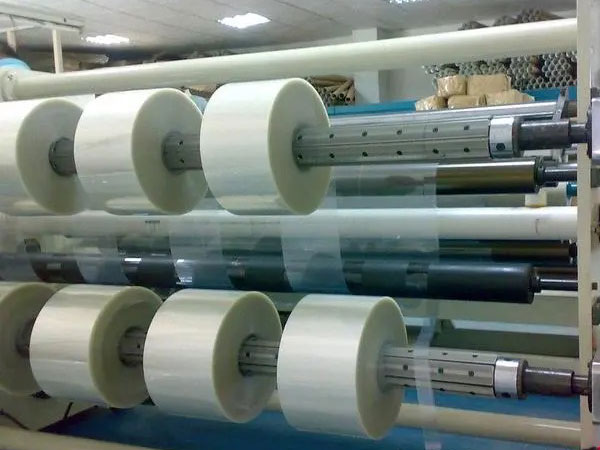
First, the core function of the intelligent control system
1. Adaptive tension control
◦ Technical principle: Closed-loop PID control + fuzzy algorithm is used to monitor the coil tension in real time through the tension sensor, and dynamically adjust the torque of the unwinding/winding servo motor.
◦ Industry pain point solving: Solving the problem of tensile deformation (excessive tension) or wrinkling (insufficient tension) of the film, especially for ultra-thin (2-5μm) metallized films, is crucial.
2. Multi-axis synchronous control
◦ Implementation: Realize the synchronization of unwinding shaft, traction roller, slitting knife shaft and winding shaft through EtherCAT bus communication, and the synchronization accuracy is ≤± 0.01mm.
◦ Example: The Japanese Hirano slitting machine adopts Mitsubishi motion controller, the speed can reach 800m/min and the slitting error is <3μm.
3. Intelligent diagnosis system
◦ Function Modules:
▪ Tool Wear Monitoring (Vibration Sensor + AI Algorithm)
▪ Thin Film Defect Detection (Linear CCD + Deep Learning Image Processing)
▪ Fault warning (predictive maintenance based on historical data)
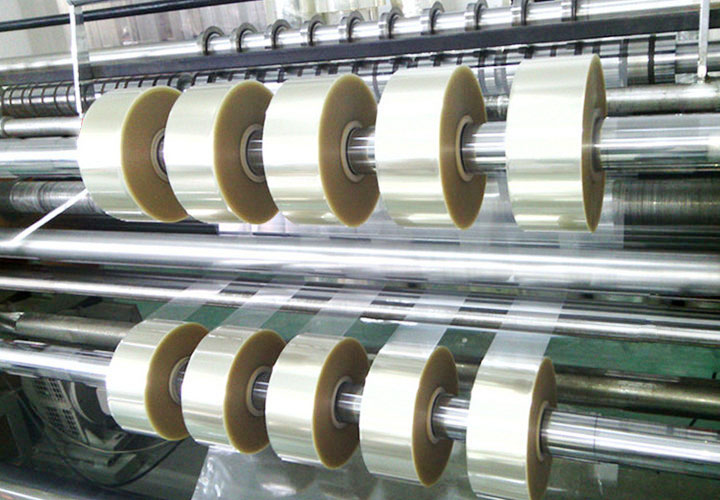
Second, the technical realization of high-precision cutting
1. Mechanical structure design
◦ Air suspension turret: reduce mechanical friction, blade radial run-out < 0.005mm (e.g. German Atlas technology)
◦ Thermal management module: The constant temperature cooling system controls the temperature fluctuation of the cutter head ±0.5°C to avoid thermal deformation affecting the cutting accuracy.
2. Cutting execution system
◦ Blade selection: Diamond-coated blades (thickness 0.1-0.3mm) are used for polypropylene films, with a life span of more than 5000km.
◦ Dynamic deviation correction: laser edge alignment system (accuracy ± 0.1mm) + real-time PID adjustment to adapt to film misalignment.
3. Optimization of process parameters
◦ Key Parameters:
| parameter | Typical value range | Impact dimensions |
| Cutting speed | 200-600m/min | Production efficiency/burr rate |
| Blade angle | 30°±0.5° | Cross-sectional perpendicularity |
| Pressure control | 0.2-0.5N/mm² | Delamination risk |
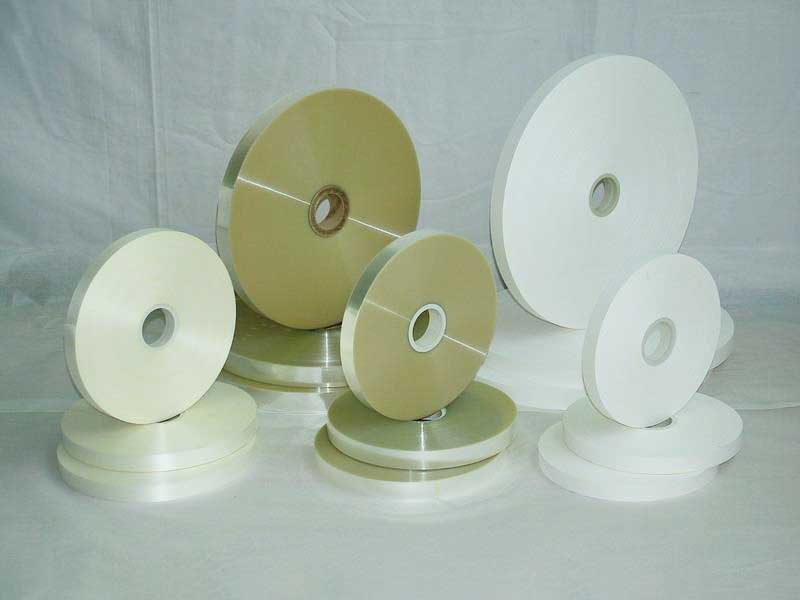
Third, the direction of industry application upgrading
1. Demand in the field of new energy
◦ To meet the special requirements of lithium battery separator slitting: develop an anti-static cutting system (surface resistance <10⁶Ω) with a clean room-level dust removal device.
2. Digital twin integration
◦ Reduce machine lead times by 30% through virtual commissioning technology, such as the application of Siemens Process Simulator on slitters.
3. Energy-saving technology
◦ The regenerative braking system recovers 90% of the braking energy, and the power consumption of the whole machine is reduced by 15% (taking the equipment with a width of 1.5m as an example, the annual power saving is about 80,000 kWh).
Fourth, technical challenges and breakthroughs
• Ultra-thin film cutting: Films below 3 μm need to be slitted by non-contact laser, but facing the problem of heat affected zone (HAZ) control, Hitachi has developed a water-guided laser cutting that can control HAZ within 20 μm.
• Intelligent algorithm upgrade: Transfer learning realizes fast parameter self-optimization of different film materials under a small number of samples, replacing traditional manual trial and error debugging.
epilogue
The new generation of capacitor film slitting machine is developing in the direction of "micron-level precision + intelligent factory integration", in which remote operation and maintenance and digital twin technology based on the industrial Internet will become the focus of the next stage of competition. Domestic equipment manufacturers need to break through the dependence on imports in core components such as high-precision linear motors and advanced control algorithms.
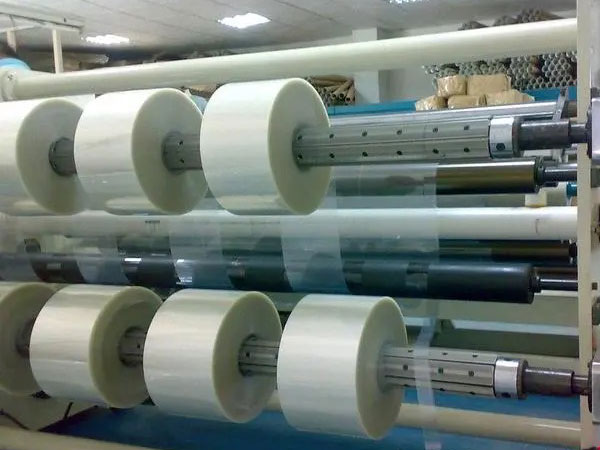 How to optimize the capacitor film slitting process? Equipment upgrade and parameter adjustment tips
How to optimize the capacitor film slitting process? Equipment upgrade and parameter adjustment tips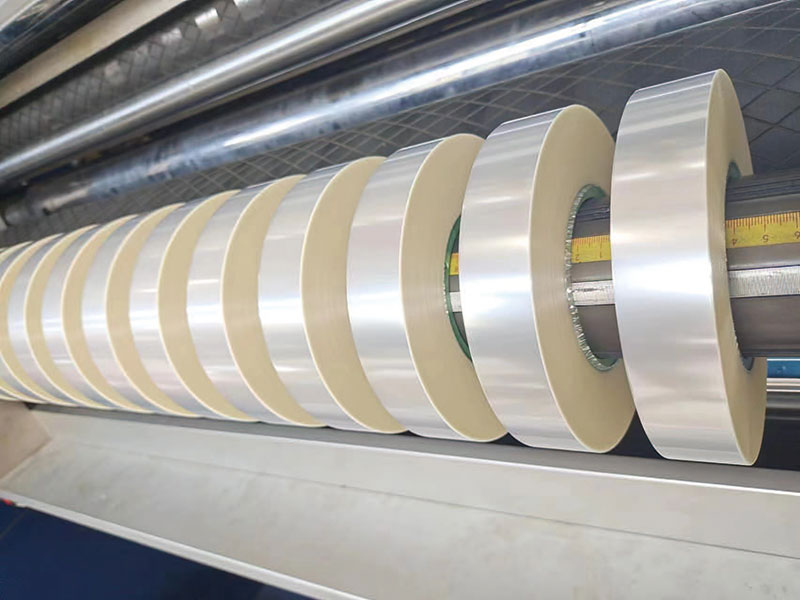 The core equipment of future film processing: the innovative direction of capacitor film slitting machine
The core equipment of future film processing: the innovative direction of capacitor film slitting machine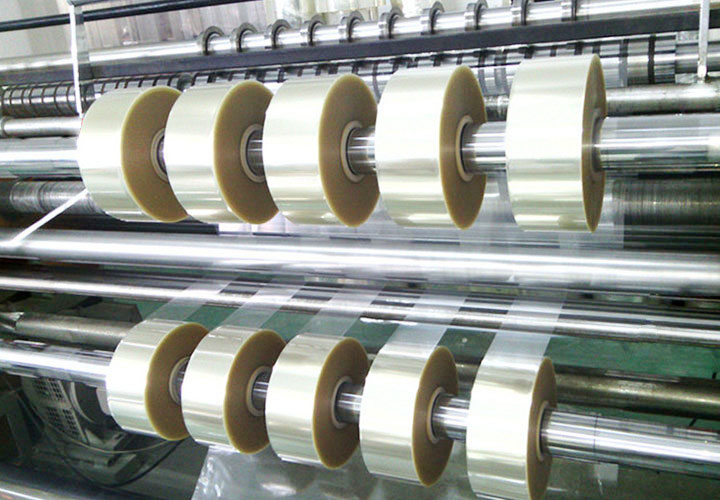 Ultra-thin material processing tool: the application of capacitor film slitting machine in the field of precision electronic film
Ultra-thin material processing tool: the application of capacitor film slitting machine in the field of precision electronic film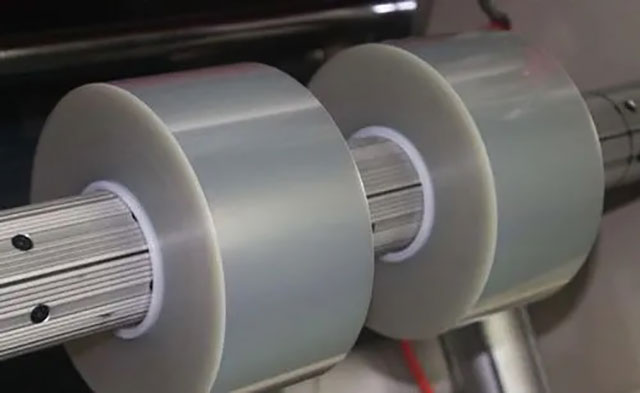 From electronics to packaging: Cross-sector application examples of capacitor film slitting machines
From electronics to packaging: Cross-sector application examples of capacitor film slitting machines Quick tool change + automatic adjustment: how can capacitor film slitting machine improve production efficiency?
Quick tool change + automatic adjustment: how can capacitor film slitting machine improve production efficiency?